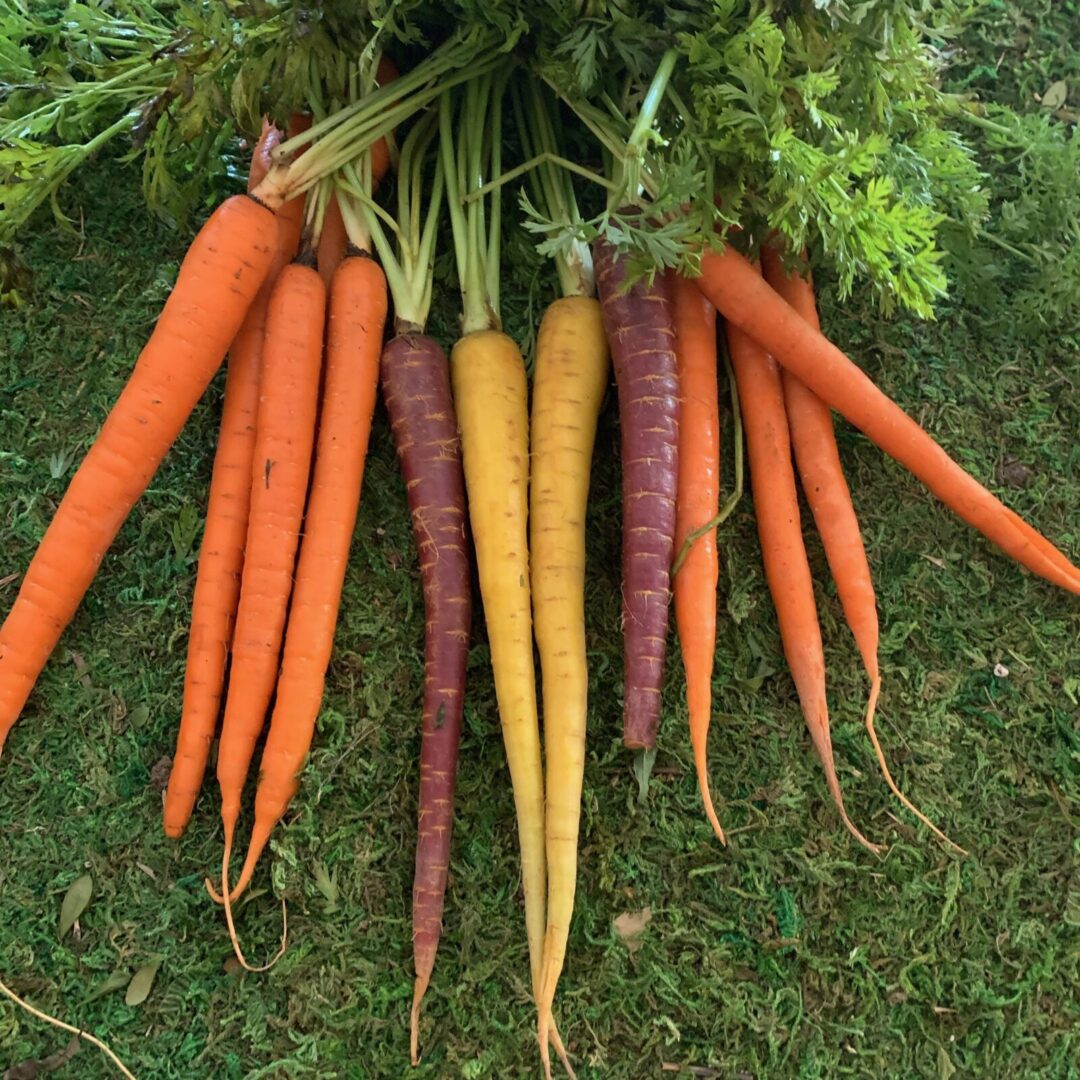Happy New Year: What Flowers for Rosh Hashanah?
By Jill Brooke

In the Jewish faith, there is a tradition to eat symbolic foods on Rosh Hashanah to ensure a happy new year going forward.
Because we at Flower Power Daily tell stories through flowers, I always create a flower arrangement for our Rosh Hashanah dinners incorporating these ingredients that becomes a beautiful display as well as a conversation piece.
So how does one use apples, honey, beets, carrots, leeks, dates, pomegranates and squash into the mix? Let me share some of the ideas I use to inspire your own table decor.
First, I’m a believer in being a traditionalist and then adding your own stylistic touch.
TIP: Use sunflowers in your Rosh Hashanah dinner as a symbol for hope and acceptance.
When I married my husband Gary, he taught me traditions of the Jewish faith. Of course, I was searching for symbolic flowers. As it turns out, I found a conversation with writer Simon Wiesenthal where he talked about how the sunflower has a lot of Jewish qualities and was his metaphor for moral dilemmas. After all, despite the darkness in the middle, hope bursts from the petals in bright sunny yellow colors and reflect optimism and acceptance.
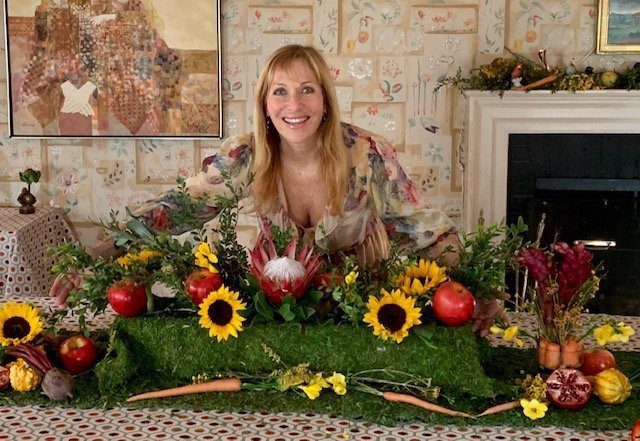
Therefore, I always use the sunflower as the main flower for my dinner and tell this story.
TIP: Since honey can’t be used inside a flower arrangement, perhaps find a “honey” colored flower like a protea or rose.
Honey is used as a symbol for a good and sweet new year. But how do you incorporate honey then into the meal aside from adding it to a dessert? Tradition has evolved where you take cut up apples and ask each person to dip it in honey. This link to apples – and the fall season – is an ideal choice because this holiday falls in September when this fruit is not only ripe but plentiful. Therefore you can use apples in your display or find honey-colored symbolic flowers like the protea – which I used – or a “toffee” rose that was showcased at the Society of American Florists convention.
Here are other items to use adhering to tradition. Dates represent “to end” and symbolizes the hope that our enemies will be finished. Leeks are used for the same message and used as a prayer that those who wish to do us harm will instead be cut off.
Because leeks have greenery, I put them in a floral arrangement or scatter them on the table with a few dates next to apples or other flowers for the best effect. These two items are not a center stage for my arrangement but are nonetheless represented.
TIP: Take a fork or a stick and put it inside an apple. Makes it easier to stand straight like a flower. Bonus? Afterwards, take apples and bake them. Or buy faux apples and use them every year for fall displays. For pomegranates, I cut them in half so the beautiful seeds become decorative displays.
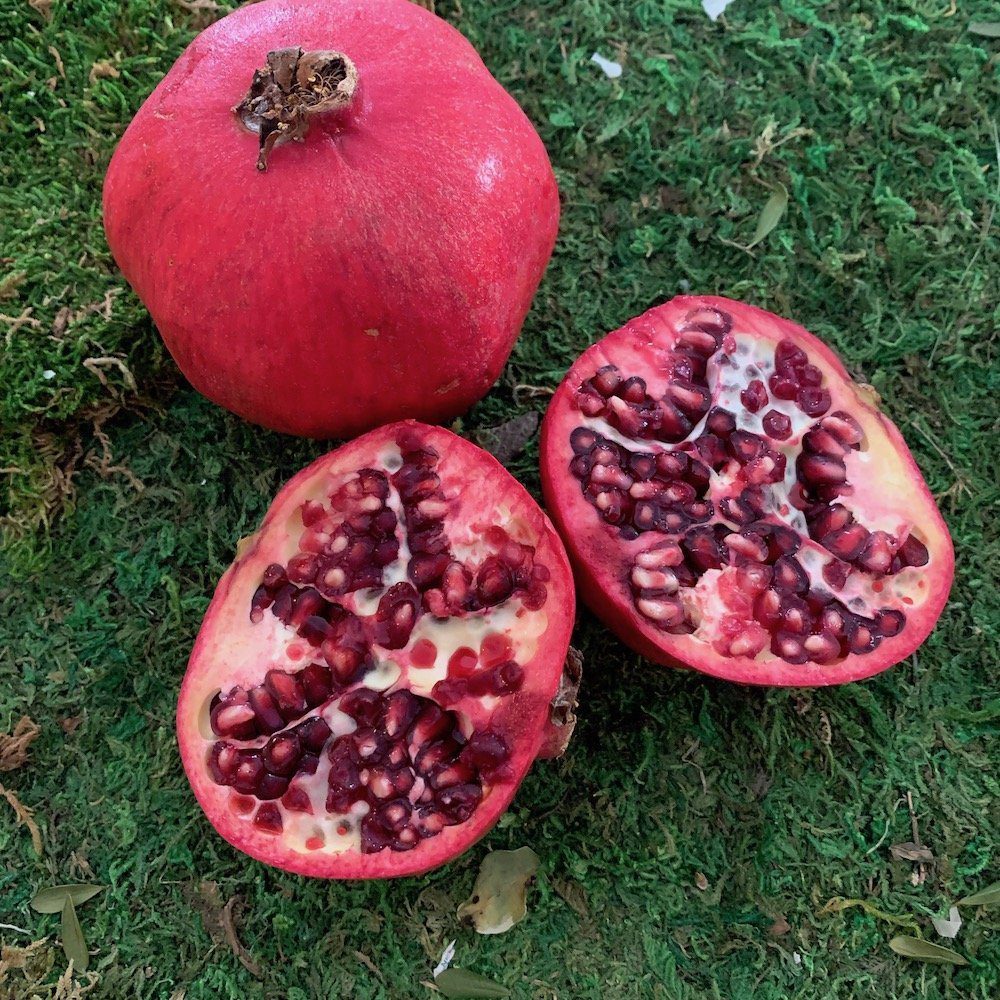
Pomegranates are essential for any dinner. I use them the same way I use apples. Though I cut them in half so their seeds are displayed. Why? It is believed that pomegranates have 613 seeds, which is the same number of commandments in the Torah. Love this interpretation because it shows how nature and the natural world can be linked to our behaviors. The message conveyed is be a good person, live a good life.
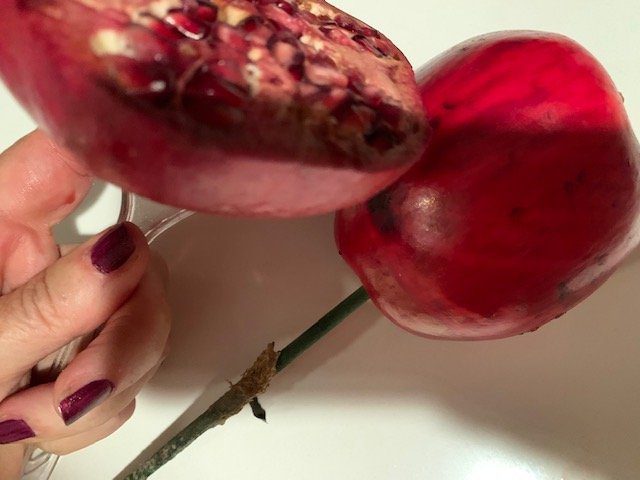
TIP: Use vegetables with their natural leaves which looks like greenery. Scatter them on moss with flowers and you have an inexpensive but interesting display. I even put them on my mantles with greenery the night of the dinner.
Other items to use are beets, carrots and squash. Turns out the Hebrew word for beets, selek, is similar to the word for “remove.” Therefore beets are used to symbolize the hope that obstacles and enemies will be removed from our path in the coming year. According to Miri Rotkovitz, the word for carrots in Yiddish means more – so carrots are symbolic for more blessings in the new year. Squash is closely related to the Hebrew word of announcing so we use this to say that our good deeds should be announced to offset any bad decrees against us.
For floral arrangements, I buy both beets and carrots with their natural big stems and leaves. Since I use moss as a backdrop for most of my arrangements, I drape the carrots and beets on the moss as well as into the floral arrangement. It creates a colorful effect. I do the same with squash and sometimes use the squash as a stand to drape the beets and carrots. For this arrangement, I put it on the side of my main container and it all blends beautifully. Each person will be viewing these symbolic treats.
Notice how I take a container, put oasis foam inside and wrap it also in moss. Then I take a knife and make slits in it so the veggies, fruits and flowers insert easily.
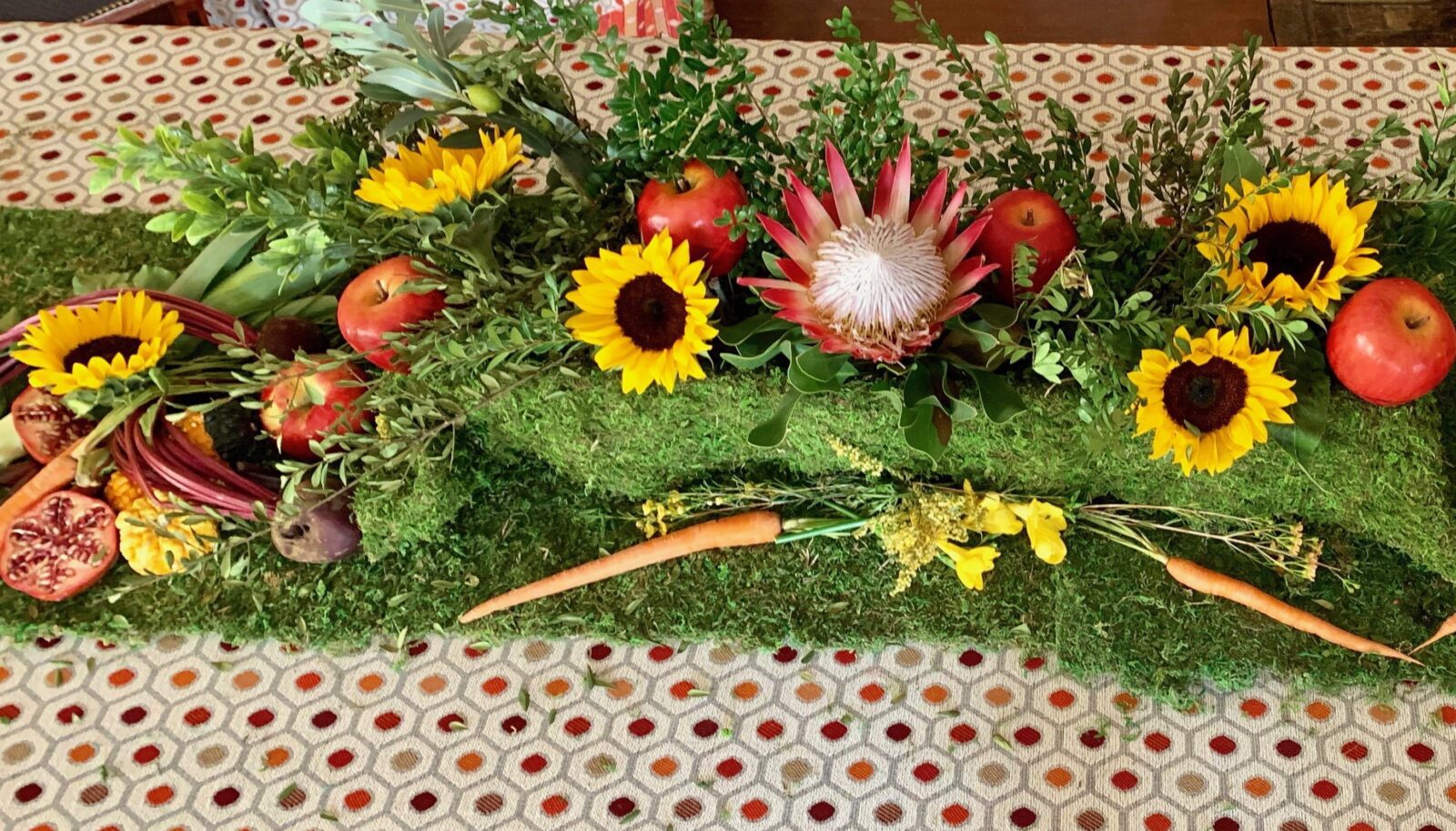
Use the bottom of the vase as a creative opportunity to create color and utilize these holiday vegetables.
You can also cut up green and yellow squash and layer your vase with carrots. Then add flowers on top. Haven’t figured out a good way to use the beets yet but maybe next year. You can bookend your main display with these smaller vases for optimal effect. Though this year I am just scattering the veggies and flowers for a free-flowing effect. But there’s a picture below that shows both options.
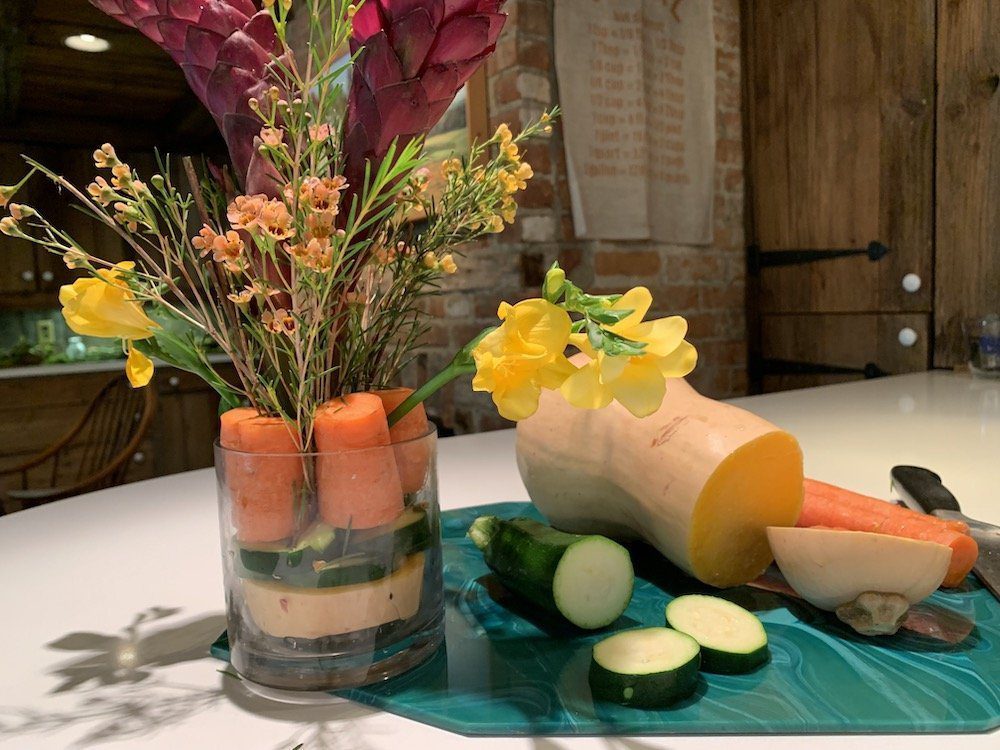
You can also use different flowers. My hydrangeas didn’t bloom this year but the remaining leaves are used for decoration often. If you don’t have extra flowers, use these stems that expand like a green umbrella.
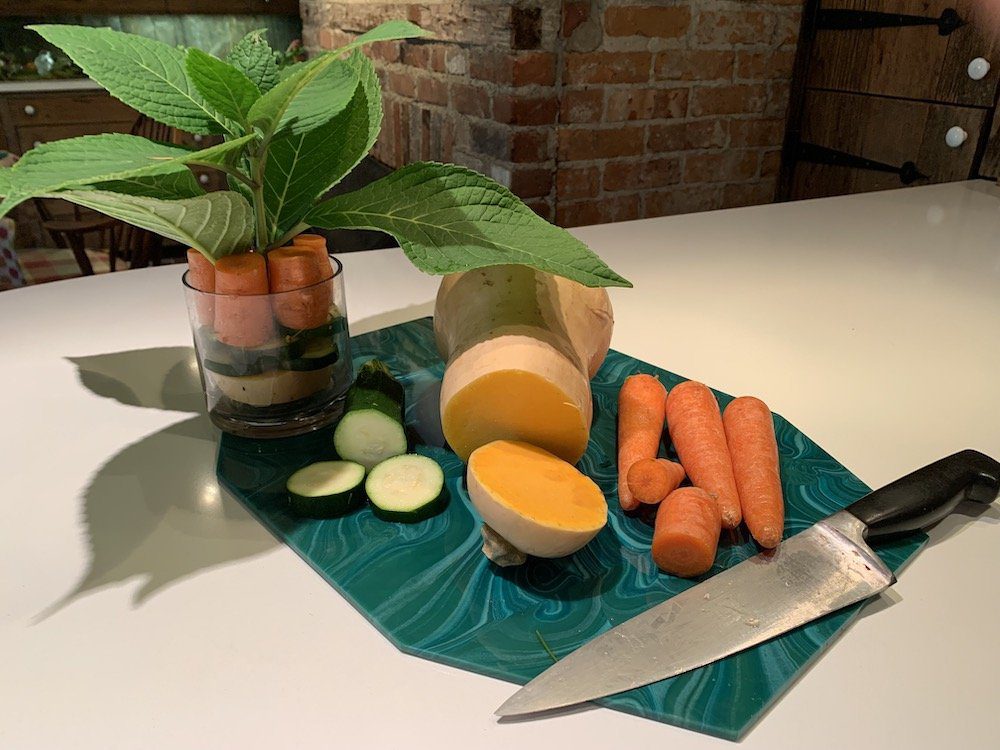
Furthermore, Rosh Hashanah is not a holiday solely for the Jewish people. It’s recognized as a holiday for everybody because it celebrates the birth of man as Adam was given a soul through the breath of God.
Also, tradition has it to use a round challah. Why? Circle of life, love and encouraging continuity.
So have fun with your floral arrangements. Flowers have ancient histories that tell stories of your heritage as well as create conversations with all age groups. Any time you can bring nature to your table – as well as stories – the events will always be memorable.
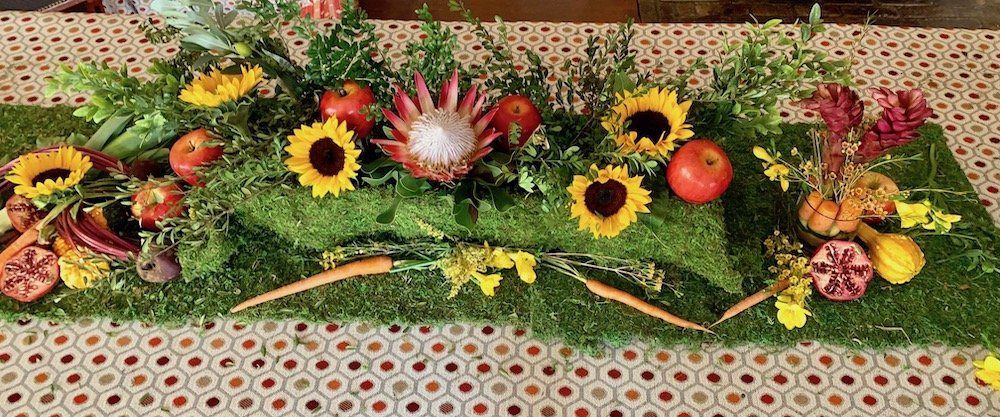
Photo Credits: FPD
Jill Brooke is a former CNN correspondent, Post columnist and editor-in-chief of Avenue and Travel Savvy magazine. She is an author and the editorial director of FPD and floral editor for aspire design and home magazine

